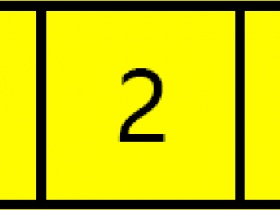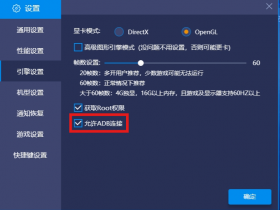- A+
所属分类:Web前端
非受控组件(了解)
- 借助于 ref 就可以通过 非受控组件 的方式,来获取到的表单元素的值。
- ref 的作用:获取DOM对象或组件。
import React from 'react'; import ReactDOM from 'react-dom'; class Hello extends React.Component{ constructor(){ super(); //1.创建ref this.txtRef = React.createRef(); } handleClick = ()=>{ //3.通过this.txtRef.current使用 console.log(this.txtRef.current.value); } render(){ return ( <div> {/* 2.绑定ref */} <input text="text" ref={this.txtRef}/> <button type="button" onClick={this.handleClick}>取值</button> </div> ) } } ReactDOM.render(<Hello></Hello>,document.getElementById("root")); props的使用
- 作用:接收到传递给组件中的属性
- 在函数组件中如何获取到 props? 通过函数的参数
- 在 类组件 中如何获取到 props? 通过 this.props 来获取
- props 是一个对象!!!
- 特点:只读!!!( 只能读取 props 对象中的属性,而不能修改 props 对象中的属性 )
- 可以给组件传递任何类型的数据。
- 注意:如果在 class 组件中,手动添加了 constructor ,那么,就应该通过参数获取到 props, 然后传递给 super,这样,才能够在 constructor 中,获取到 props!!!
//函数组件 const Hello = props => { // props 就表示传递给组件的属性 console.log(props); } //给组件传参数 <Hello name="jack" age={19} colors={['red','blue','green']} /> // 类组件: class Hello extends React.Component { constructor(props) { super(props) // console.log('在构造函数中,获取到 props ', this.props) console.log('在构造函数中,获取到 props ', props) } render() { console.log('class组件中获取到props:', this.props) return ( <div> <h1>props:{this.props.age}</h1> {this.props.colors.map((item, index) => ( <p key={index}>{item}</p> ))} </div> ) } } 组件通讯
父到子
- 1 父组件中提供状态
- 2 在子组件标签上添加属性,值为 父组件中的状态
- 3 子组件中通过 props 来接收父组件中传递过来的数据
// 父组件: class Parent extends React.Component { // 提供数据 state = { lastName: '王' } render() { return ( <div className="parent"> <h1>父组件:</h1> {/* 1 通过属性给子组件传递数据 */} <Child name={this.state.lastName} /> </div> ) } } // 子组件: // 2 子组件中通过 props 接收数据 const Child = props => { return <p className="child">这是子组件:{props.name}</p> } 子到父
-
思路:父组件提供一个事件(函数),让子组件调用;子组件调用的时候,将数据作为参数的传递,父组件中通过事件(函数)的参数,就拿到子组件中的数据了。
-
1 父组件提供事件
-
2 将事件通过props传递给子组件
-
3 子组件中通过props接收到父组件中传递过来的事件
-
4 子组件调用该事件,将数据作为参数传递
-
注意点:父组件提供的方法中 this 执行问题。
- 为什么会有这个问题?因为这个方法不是父组件自己调用的,是由其他组件调用的,所以,需要处理this指向。
// 1 提供事件(回调函数,) // 事件是子组件调用的,因此,先要通过 props 传递给子组件 // 2 将事件传递给子组件 class Parent extends React.Component { state = { msg: '' } getChildMsg = data => { console.log('父组件中的方法调用了', data) this.setState({ msg: data }) } // 注意:this指向问题,因为这个方法是由子组件调用的,所以,应该提前处理好 this 指向! /* getChildMsg(data) { console.log('父组件中的方法调用了', data, this) this.setState({ msg: data }) } */ render() { return ( <div className="parent"> <h1>父组件:{this.state.msg}</h1> <Child fn={this.getChildMsg} /> </div> ) } } // 子组件: // 3 子组件中通过 props 接收到父组件中传递过来的事件 // 4 子组件中调用传递过来的事件, 将数据作为事件的参数传递 const Child = props => { // console.log(props) const handleClick = () => { // 调用 props.fn('撩汉子') } return ( <p className="child"> 这是子组件: <button onClick={handleClick}>发送数据给父组件</button> </p> ) } 兄弟组件
- 思路:状态提升,也就是:将两个兄弟组件之间的共享数据,放在父组件中。
- 父组件的职责:1 提供共享数据(state) 2 提供修改状态的方法
- 例子:如果 子组件2 要传递数据给 子组件1
- 子组件1:只要通过 props 接收到父组件中传递过来的数据(父 -> 子)
- 子组件2:调用父组件中修改状态的方法(子 -> 父)
- 但是,需要先通过 props 获取到父组件中传递过来的方法
// 父组件 // 1 提供状态 // 2 提供操作状态的方法 class Parent extends React.Component { state = { msg: '默认值' } updateMsg = data => { this.setState({ msg: data }) } render() { return ( <div className="parent"> 这是父组件: <Child1 msg={this.state.msg} /> <Child2 updateMsg={this.updateMsg} /> </div> ) } } // 子组件1 // 3 接收数据(数据由父组件提供) class Child1 extends React.Component { render() { return <div className="child">这是子组件1:{this.props.msg}</div> } } // 子组件2: // 4 在父组件中传递事件给子组件 // 5 给按钮绑定单击事件 // 6 调用父组件中的事件来更新数据 class Child2 extends React.Component { // 单击事件 handleClick = () => { // 调用父组件的事件 this.props.updateMsg('子组件2222222222222222222222') } render() { return ( <div className="child2"> 这是子组件2: <button onClick={this.handleClick}>传递数据给 Child1</button> </div> ) } } 评论列表案例
-
分析:因为 CommentList 和 CommentForm 这两个子组件中,都要用到 评论列表 数据,所以,就利用 状态提升 的思想,将评论列表数据放在了 父组件Comment 中。
- 父组件的两个职责:1 提供评论列表数据状态(list) 2 提供修改状态的方法(updateComment)
-
功能1:渲染评论列表
- 利用 父->子 的通讯,将父组件中的 list 传递给 子组件;子组件中通过 props 接收
// 父组件中渲染子组件: <CommentList list={this.state.list} /> // 子组件中: <ul> {props.list.map(item => ( <li key={item.id}> <h3>评论人:{item.name}</h3> <p>评论内容:{item.content}</p> </li> ))} </ul> - 功能2:添加评论
- a. 通过受控组件的方式,来获取到评论人和评论内容
- b. 将用户输入的内容,添加到 list 中
- 因为 list 是由父组件提供的,所以,由父组件提供修改状态的方法(updateComment);通过 props 传递给子组件后,由子组件调用
// 父组件中渲染子组件: <CommentForm updateComment={this.updateComment} /> // 子组件中: // 发表评论 addComment = () => { const { name, content } = this.state // ... this.props.updateComment(name, content) // ... } Context(了解)
- 使用场景:跨组件传递数据
- 如果两个组件是远方亲戚(比如,嵌套多层)可以使用Context实现组件通讯
- Context提供了两个组件:Provider 和 Consumer
- Provider组件:用来提供数据
- Consumer组件:用来消费数据
const { Provider, Consumer } = React.createContext() <Provider value={this.state.msg}> <div className="parent"> 这是父组件: <Child1 /> </div> </Provider> // Child1 -> Child2 -> Child3 // Child3 // data 就是 Provider 中提供的 value <Consumer>{data => <p>接收到的数据为:{data}</p>}</Consumer> 组件的 children 属性
- 作用:获取组件标签的子节点
- 获取方式: props.children
- children 与普通的 props 属性相同,可以是任意值。
class Parent extends React.Component{ render(){ return ( <div> <Child>哈哈</Child> <Child>{11}</Child> <Child>{["red","blue","green"]}</Child> </div> ) } } class Child extends React.Component{ render(){ // 获取children中的值 console.log(this.props.children); return ( <div> 子节点 </div> ) } } props 校验
-
场景:给组件添加 props 校验,来增强组件的健壮性。
- 约定:封装公共组件的时候,都添加 props 校验
-
1 安装:
yarn add prop-types -
2 导入
import PropTypes from 'prop-types' -
3 给组件名称添加
propTypes属性,值是一个对象 -
4 对象的键就是要校验的 props 名称,值是
PropTypes.array等,从PropTypes中获取到的校验规则
const Parent = () => { ... } // 2 给组件添加 props 校验 Parent.propTypes = { // 规定 colors 属性的类型为:数组(array),如果将来使用组件的时候,传入的 colors 属性类型不是 array ,就会通过警告来告诉使用者。 colors: PropTypes.array, gender: PropTypes.oneOf(['male', 'female']).isRequired } props 默认值
- 可以通过 组件名.defaultProps = {} 来给组件添加 props 的默认值。
const Parent = () => { ... } // 添加 props 的默认值: Parent.defaultProps = { gender: 'male' } 



